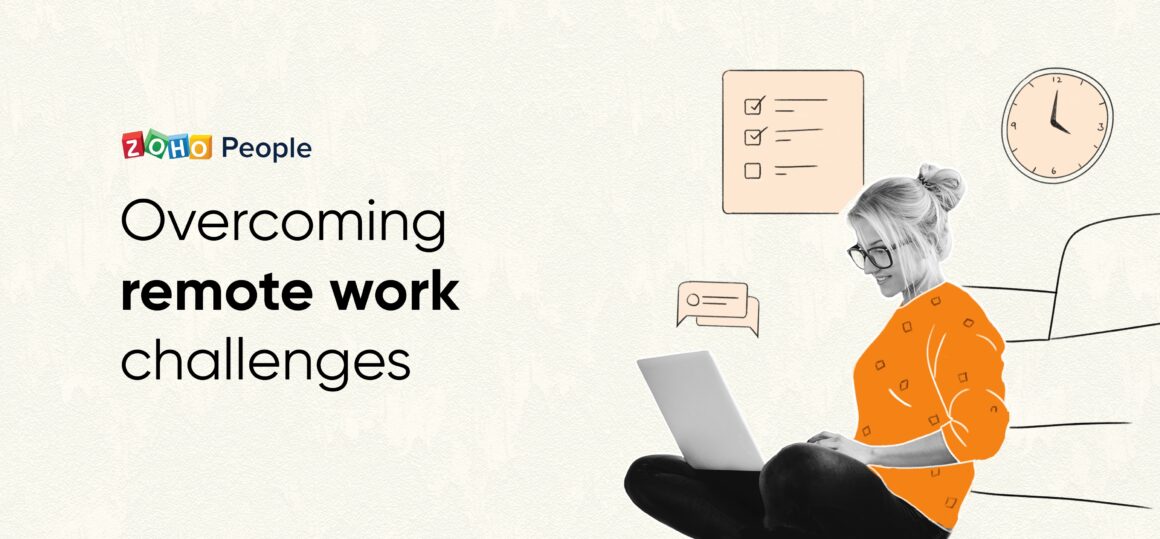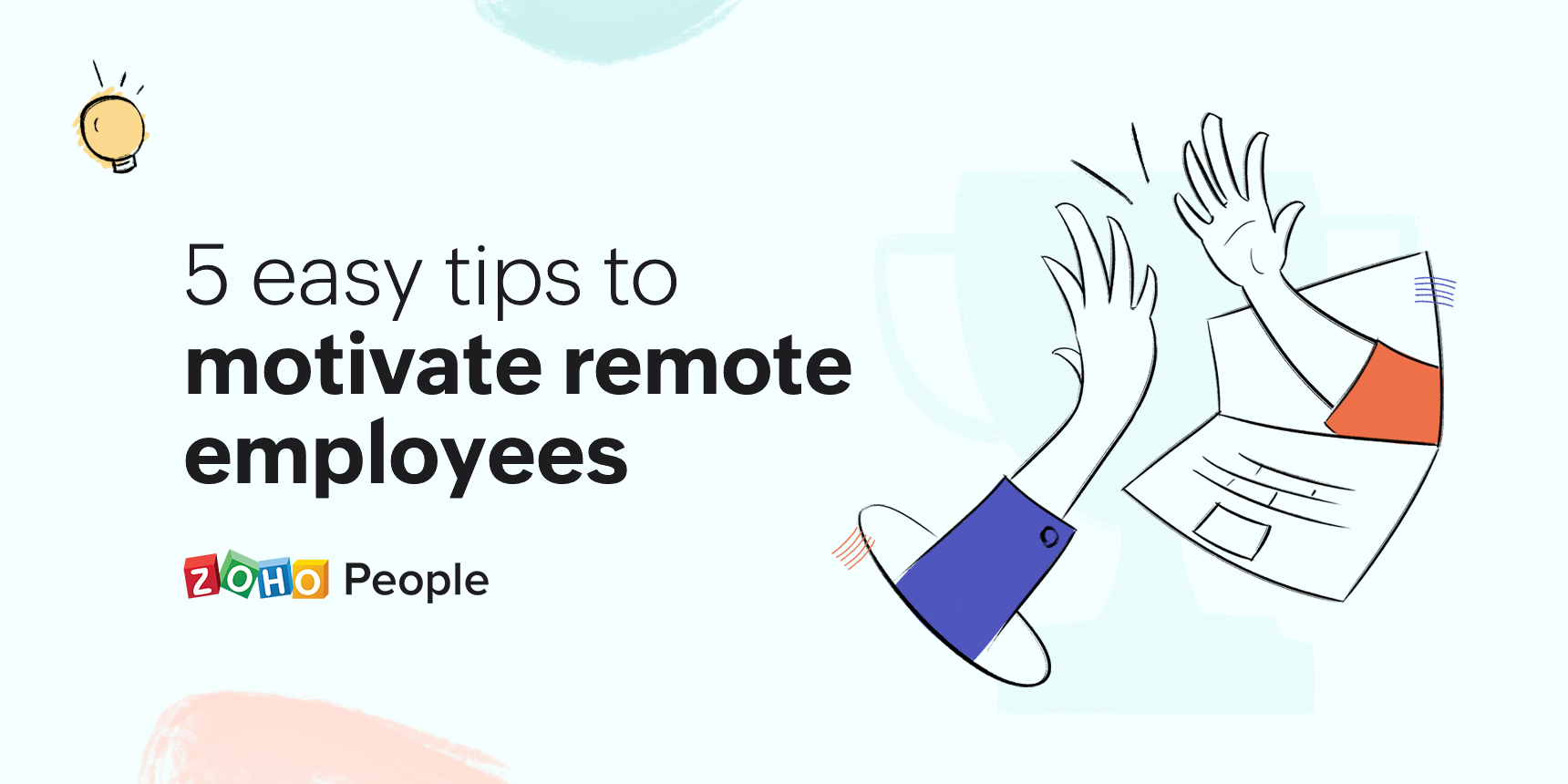- HOME
- COVID-19 Resources
- The top 5 challenges for a sudden transition to remote work
The top 5 challenges for a sudden transition to remote work
- Last Updated : August 23, 2023
- 6.9K Views
- 4 Min Read

As a precaution against the Coronavirus, many organizations have made a sudden switch to remote work. If not properly handled, this transition can be stressful for both employers and employees. For the good of the organization and your employees’ well-being, it’s important that you provide support during this time. If your organization is new to remote work, knowing the best ways to provide a seamless work experience while employees work from home can be a little challenging. The disconnected feeling that comes with remote work and the anxiety surrounding the crisis can be emotionally and mentally stressful for your people. During such times, you should take the necessary steps to understand what makes remote work challenging, so you can overcome those obstacles and maintain the continuity of your business. Here are some of the common challenges related to remote work and tips on how to overcome them:
Team communication
Communication and collaboration among virtual teams can be tough without the right technology. Without proper communication, several issues will arise. Managers will be unaware of their team’s progress, employees will feel isolated, their morale will drop, and informed decisions will be impossible to make. Prioritizing communication is important for any organization, but it’s especially vital for remote work.
Solution:
Deploying the right communication tools is the first step to overcoming this while working remotely. Have an internal chat that allows employees to interact instantly rather than relying on emails and phone calls. Set up a separate intranet to ensure that the company announcements reach every employee. Create dedicated groups and online forums where employees can discuss different issues. Encourage your managers to keep in touch with their teams on a regular basis.
Also read:Improve your remote communication and collaboration
- Tracking productivity
With employees dispersed in different locations and a lack of physical interaction, tracking employee productivity can be a big challenge. It will be easy to lose track of how projects are progressing or whether work is getting completed on time. Checking in with employees about how well they are performing on tasks is difficult if you can’t track their activities. If left unmanaged, this lack of oversight will damage your organization’s bottom line.
Solution:
It is important to monitor your employee’s performance without micromanaging. So, encourage your managers to explain their expectations clearly to their teams. With clear expectations, employees will be able to set smart goals and work towards them. Managers can check in with their teams every week to understand their work progress and see if they need any support. If feasible, cloud-based timesheets can be used to track the time spent on different projects and bill your clients easily. With the use of timesheets, projects can be planned well without any unnecessary confusion. This makes the process more transparent and accountable.
Feeling of isolation
If your employees are used to working along with their peers, this sudden transition to remote work can be difficult for them. According to the State of Remote Work Report, feeling isolated is one of the top two problems reported by remote workers. This can damage an employee’s mental health, decreasing their productivity and morale.
Solution:
Check in with your employees every now and then to see if they need any support. Start discussions about lighter topics and encourage your remote workers to participate. For instance, ask them to share about their remote working experience. This will build a feeling of inclusion and help your employees to understand that they aren’t alone. Encourage them to take social breaks, and organize video conferences regularly to simulate face-to-face interaction.
Security
While employees work remotely, the chances of data theft and misuse can be higher because employees are often using their own devices and Wi-Fi networks. Their home Wi-Fi may have weaker protocols, increasing the chances of hacking and data misuse.
Solution:
Conduct virtual training to help your remote workforce understand the seriousness of this issue and the preventive steps needed to avoid a data breach. Outline the security policies that have to be followed while working remotely. Make use of firewalls, VPN, anti-virus software, and strong passwords. If your organization has data privacy manuals and documents, encourage your employees to go through them again. Explain the consequences of data theft and that simple measures can go a long way to protecting employee and organization data.
Recognition and Appreciation
Without face-to-face interaction, it’s easy to let employee recognition and appreciation become less common. A lack of recognition and appreciation decreases employee satisfaction, motivation, productivity, and morale as employees start to wonder if their contributions are valuable to the organization. Especially during these tough times, your employees need motivation to stay focused and productive.
Solution:
Encourage your managers to keep a track of what your employees are doing and show appreciation when individuals or teams go out of their way to keep up your business. A simple thank you can do wonders. This shows employees that they are valued and respected for their hard work. No matter the working situation, never forget to let your employees know how their contribution has helped your organization grow.
This sudden transition to remote work can be difficult for you and your employees. We hope this article helped you hone in on some of the main challenges of remote work and how they can affect your business. With these solutions, your business can remain strong and productive during this crisis, and your employees will remember how you maintained an excellent working experience for them despite the difficult situation.
Zoho People, our people management software, allows you to perform all the HR functions including onboarding, performance management, employee learning management, document management, database management, attendance management, time management, etc. remotely. To get more information about our product, click here.
 Tarika
TarikaContent Specialist at Zoho People


